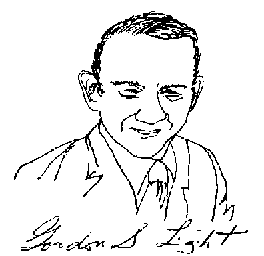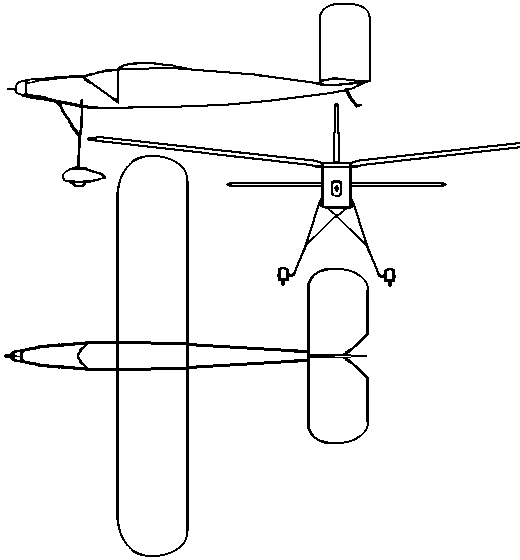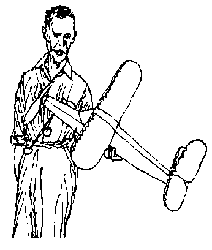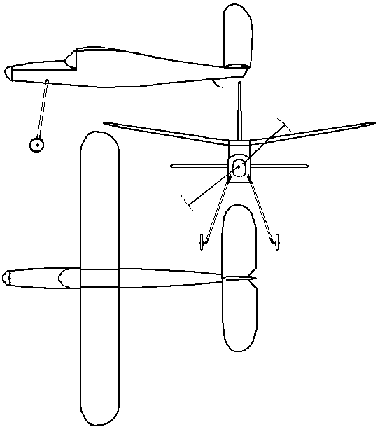Wakefield International Cup - A history from 1911 by Charles Dennis Rushing
1935 Gordon S Light, 22, USA
In 1935 the SMAE again received boxed Wakefields from America. Team USA consisted of Frank Zaic, of NY, NY, who was a 1934 Team member, Donald Mertens, Vernon Boehie, Ralph Kummer, and Gordon S Light, the "Unofficial 1932 Wakefield Champion", who placed third in 1933, and whose Wakefield was destroyed on the field in 1934. Light was very determined, in fact he made simulated attempts with this year's Wakefield; first he would disassemble it, pack it carefully into its container, shake the container as hard as he could, and removed it from the container, and reassemble it, then he would fly it, and check its adjustments carefully. Light did this over and over again, until he was assured that the aeromodel, and the container, was ready for shipment to Great Britain.
Monday, August 5, 1935, dawned clear, calm, and warm at Fairey's Aerodrome, Hayes, Middlesex, a simply superb day to fly rubber power Wakefield aeromodels. The USA Team boxes containing Wakefields were there, we do know that. Alex Imrie, writing in "AeroModeller, Vintage Corner", in July 1986 wrote "Unfortunately ... full flight details have never been published on this (Wakefield) Event..." If Alex, was still alive to read this, I can state unequivocally that very little has ever been recorded about any pre-1948 Wakefield Event , until this book was written. Most of the information, if any was available comes in snippets, often disassociated from the subject. I will attempt to stitch together these snippets of history to describe what Imrie and I think occurred.
Along with the USA Team boxes there were also Team Australia boxes containing aeromodels sent by: Milton Boss, Jim Fullarton, J Danks, J Donald, A Flew, and H J Mckay, all to be flown by the Proxy Team. John Hamilton, writing in the publication "Wings", names the Proxy Team member Tommy Ives as the person who was selected to fly Gordon S Light's Wakefield. I have drawn a sketch of Tommy holding Gordon's ship just prior to its first and only flight. Tommy Ives removed Light's aeromodel from its container, and following Light's written instructions, test flew it, Again this was a beautiful design, developed since 1932, into a consistent flyer, and Tommy had no problems with it.
Tommy, again following Light's instructions, packed 600 turns into the "T-56" brown rubber motor, on a motor stick, outside of the fuselage, than hooked up the wound motor inside the fuselage, set it on the take-off board, assumed the prescribed "by the rules position", by holding the tip of the propeller, and the tip of the right wing. Tommy let her go, and go she did! This was a towering flight of 7 minutes 30 seconds OOS, straight up. More than two hours later Light's Wakefield arrived back at Fairey's in an airplane flown by a pilot who had found it at Hanworth Aerodrome, where it landed after a two hour flight! Gordon S Light was the 1935 Wakefield Cup Champion! He never quit, and he never gave up trying. His Wakefield is now located in the AMA Museum, a place of honor for it, and for a person who epitomises what this Wakefield Cup Event is all about.
Now aeromodellers the world over, because of the determination shown by Gordon S Light, and his fellow Wakefield flyers, like Frank Zaic through his publications, were committing their energies to the design of aeromodels especially for the Wakefield event. Nations were now sending six person teams or their aeromodels to be flown at the Wakefield events. The 1936 Wakefield Cup event would be held in the USA, at Detroit, Michigan, and Team Great Britain was sending six persons to challenge the World.
| Place | Name | Country | Round l | Round 2 | Round 3 | Average time |
| 1 | G S Light | USA | 440.0 | ? | ? | 213.0 |
| 2 | J B Allman (1934 WC) | GB | 170.0 | 128.0 | 125.0 | 141.0 |
| 3 | Vincre | France | 180.0 | 75.5 | 157.8 | 137.6 |
| 4 | ? | ? | ? | ? | ? | ? |
| 5 | M Boss | Australia | 59.0 | 413.5 | 66.7 | 113.0 |
| 6 | R N Bullock | GB | 83.0 | 107.5 | 121.0 | 103.8 |

| WINNING WAKEFIELD 1932 | ||
| component | inches | mm |
| wing | 36.25x5 | 921x127 |
| tail | 15.75x4 | 400x102 |
| fuselage | 26 | 660 |
| propeller | 17 dia 28 pitch | 432 dia 711 pitch |
| rubber | 1/8" 9 strands 1.8oz | |


| WINNING WAKEFIELD 1935 | ||
| component | inches | mm |
| wing | 39.5x5.5 | 1003x140 |
| tail | 20x4 | 508x102 |
| fuselage | 34 | 864 |
| propeller | 17 dia 28 pitch | 432 dia 711 pitch |
| rubber | 1/8" 12 strands 4.1oz | |

References
Model Aeronautics Year Book, 1935-36, p.7, Frank Zaic
M.A.N. Oct 1935, p.28, Junior N.A.A. News
M.A.N. Aug 1937, p.28, Junior N.A.A. News
M.A.N. Sept 1948, p.16, Wakefield in '48, John L MacKenzie
Aeromodeller, Nov 1985, p.664, SAM35 Wakefield Ann.meet
Aeromodeller, June 1986, p.432, Vintage Corner, Magpie
1953 International Competition Handbook, Gerold Ritz
Music: "Porgy and Bess"; Literature: "Tortilla Flat", Cine: "A Nite at the Opera"

